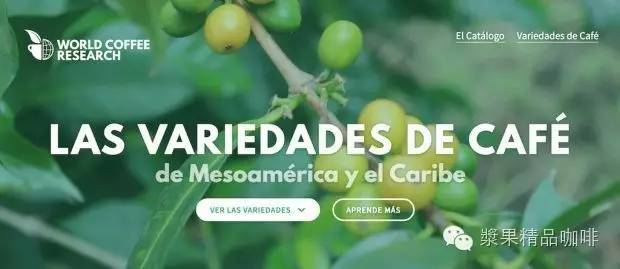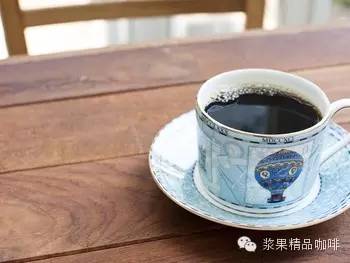The World Coffee Research Association publishes the Compendium of Coffee species
The World Coffee Research Association (World Coffee Research), hereinafter referred to as WCR, issued the Coffee Tree species of Central America and the Caribbean, an unprecedented Arabica tree species compendium.

You can download it from the following website:
Https://varieties.worldcoffeeresearch.org
This compendium was written by WCR and the designated Cooperative Coffee Farm. You can download both Spanish and English versions for free online, with a total of 47 pages. WCR, a non-profit organization, says it wants to print the program and send it to more landowners to help them learn about coffee trees through national coffee institutes, exporters, and so on.
This project was caused by leaf scab in Central America in 2012 and still has a significant impact on coffee-growing economies in Central and South America, South America and Mexico. WCR estimates that in Central America alone, the coffee-growing area affected by leaf disease is about 600000 hectares, and 300, 000 coffee farms are forced to re-grow seedlings.
As we all know, the life span of a coffee tree is about 20 to 30 years. WCR pointed out that if coffee farm owners are unable to choose coffee trees that suit their farm environment, the losses will outweigh the gain. At present, the books and information on coffee cultivation are not updated in time, resulting in the normal development of the world coffee planting industry. In order to seek exporters of unscrupulous coffee, some unscrupulous coffee exporters only focused on micro-batches and high prices operated by the consumer market at that time, ignoring many good Arabica. As a result, coffee farmers in the growing areas could not correctly understand or popularize the knowledge of coffee trees.
This program introduces and certifies 33 Arabica tree species, and provides 19 planting information for each tree species, including coffee species quality potential, yield potential, tree species growth height, optimum planting altitude, leaf blight resistance, pest resistance, nematode susceptibility, bean size, leaf tip color and so on. Each planting information is accompanied by a description and a diagram to give the reader a more direct understanding of the different variables of different tree species.
For example: iron pickup
The syllabus provides the past historical planting situation of a single coffee species, such as ideal planting environment and conditions, disease resistance, etc., and is described and graded through the 19 different coolings mentioned above. You will find additional information about the history of each coffee tree species and other additional information on the interactive page of the WCR website.
WCR's tree species page is very user-friendly and is an asset for startups or nursery units and helps their products.
This program costs US $70, 000 and is supported by the U.S. Department of Agriculture and PROMECAFE, a multinational coffee survey agency, as well as strong support from other organizations, including: Anacaf é, CIB, Codocaf é, ICAFE, IHCAFE, INTA, JNC, MIDA, PROCAFE and Texas coffee M University.

This article refers to the website:
Www.dailycoffeenews.com
Www.worldcoffeeresearch.com
Important Notice :
前街咖啡 FrontStreet Coffee has moved to new addredd:
FrontStreet Coffee Address: 315,Donghua East Road,GuangZhou
Tel:020 38364473
- Prev

Take a cup of coffee and walk. Why did the coffee spill? the funny Nobel Prize in fluid Mechanics.
If you walk with a cup of coffee, why is it easy to spill? Although this is a common phenomenon, it is not a simple problem. Because the two units involved in this mechanical system are biology (coffee holder) and fluid (coffee), the motion mode of biology is not as stable as machinery, and fluid mechanics is also notoriously difficult to do, the combination of the two creates more uncertainty.
- Next

Analysis of caffeine content in ice drop coffee and all kinds of coffee
Ice caffeine is a Dutch colony in Java, Indonesia, in the 17th century. It is said that the coffee extraction method used here was introduced by Dutch merchants, so it was named Dutch coffee Dutch Coffee. This kind of coffee drips with ice water for a long time, so it is also called coldbrew coffee cold (ice brew) or water drip coffee (ice drop). one
Related
- What equipment does a novice Xiaobai need to buy to learn to make coffee? Filter cup electronic scale bean grinder manual flushing pot purchase guide
- Stores are closed one after another! Centenary Italian coffee brand Lavazza will withdraw from the Changsha market?!
- Tea Beauty will open a store in Shanghai and Shenzhen?! Netizen: Change the write-off mechanism first
- Fake news! Mixue Ice City employees insulted HR and smashed the store?!
- Bawang Tea Lady employees "Hand-made milk tea" is on a hot search! Official emergency response
- What's the difference between Robusta and Arabica coffee? What parameters and proportions do you use to grind the water temperature for making hand-brewed coffee?
- Do I have to use pure milk ice bok to make Dirty coffee? What is the difference between Italian milk dirty coffee Dirty and latte and white cappuccino?
- Orange chocolate latte making ratio parameters and formula sharing! Winter special latte milk espresso recommended!
- How does the degree of roasting of coffee beans determine? What is the difference between espresso beans and hand-brewed coffee beans? Is it better to roast Huakui coffee in the medium or lightly roast it?
- How does water injection style affect coffee flavor? How does the size and height trajectory of the water flow used to brew coffee affect extraction?

